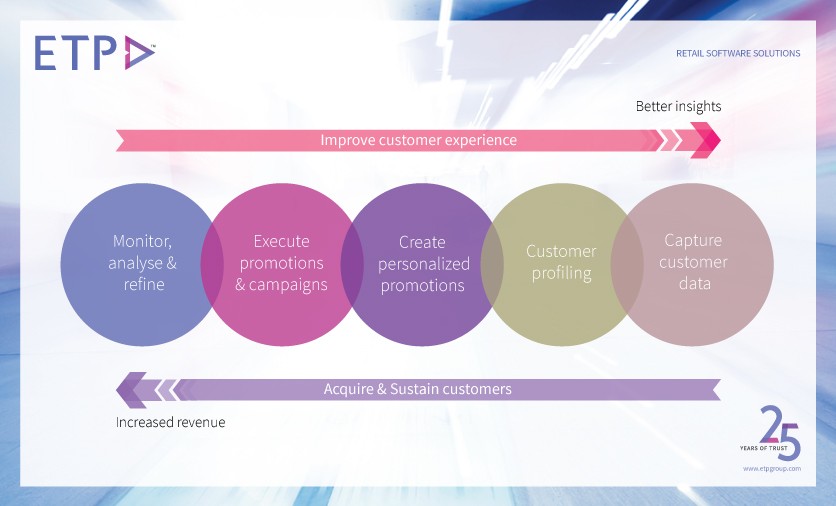
Disruptive innovation, a term of art coined by Clayton Christensen, is described as an innovation that helps create a new market and value network, and eventually disrupts an existing market and value network (over a few years or decades), displacing an earlier technology. The retail business is experiencing tumultuous change and instead of fortifying a singular approach, retailers are adopting multi-dimensional technology through disruptive innovations which are fast establishing themselves within the industry. Emerging retail technology like Mobility, Digital Wallets, Big Data, Geo-fencing, etc. has helped retailers explore and expand to a global market. Simultaneously, it is providing the right system fitments that help reduce costs through optimized operations, gain profitable growth with better business intelligence and increase brand equity which becomes proportional to the rising customer connect and satisfaction.
The best example to support the above statement would be the continuing ascent that Apple has charted and secured for the future. In 2014, Apple retained its position as the world’s most valuable brand, increasing its brand value by 21% to $118.9 billion. The company trail blazed an era of disruption starting with mobile technology in 2007 and powering on with business apps and devices like iPod and iPad which fast became trendsetters in device technology.
Mobility in retail is changing the way customers interact with brands and consume products, services and information. Most retailers have gained and sustained increased productivity enjoying the ‘first mover advantage’ with mobile internet. The internet of things has made it possible for retailers to build assured ROI within the business. These are not device centric innovations but rather a universal solution that realizes projected growth and fulfills customer experience and the brand’s USP. Adding to the same, digital wallet technology is quickly catching on to become one of the key payment modes, especially in industries like retail, banking, entertainment, etc. Forrester research data reveals that 50% of US smartphone owners are open to using their mobile phones for in-store payments. While this technology lends access to finance and payment related functions on handheld or desktop devices, it also manages a behemoth of value added services like offers, discounts, loyalty credits, etc. and even one-click comparison shopping.
Big Data technology has changed retail market dynamics for good. Retailers are now targeting individuals rather than demographical sub-sets, building relationships and awareness over ‘sales pitches’. Recently, Walmart launched the social, mobile and retail-focused Walmart Labs in Silicon Valley, and it acquired a handful of tech startups, including Kosmix and Vudu. Walmart Labs developed the search engine, Polaris, which uses semantic search algorithms to understand what someone is searching for and thus boost sales. On top of that, the lab’s Social Genome Product culls through millions of tweets, Facebook messages, blog postings, YouTube videos and more to detect purchase intent and drive ecommerce.
Geo-fencing is the software application which uses Global Positioning System (GPS) or Radio Frequency Identification (RFID) to create a virtual geographic fence. This can be dynamically defined and tracked as per requirement. Although this technology has multi-dimensional uses e.g. hospitals, human resources, high security, etc., it is being quickly adopted in retail to creatively engage and inform customers – attract them to the store at the most opportune time when they are within the location parameters. Retailers can also use the registered and opt-in customer data to further provide relevant content, as per their previous buying or payment history. For example, the Walgreens app has adopted Apple’s Passbook feature which uses geo-fencing to remind users to refill or pick up their prescriptions when they enter a Walgreens store.
The above examples represent a snippet of how disruptive technologies are making it possible for retailers to infuse advantageous sophistication into their overall brand experience. It represents profound opportunities, especially considering the potential of varied fast emerging retail markets worldwide.


